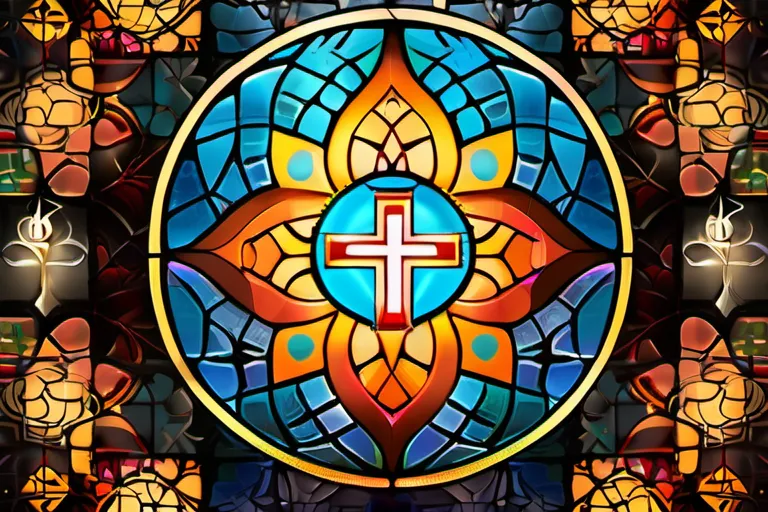Explore the unique aspects of major religions and lesser-known beliefs, delving into their practices, origins, and cultural impact.
This comprehensive guide will take you on a journey through the world’s most popular religions and lesser-known belief systems. From Christianity to Buddhism, Hinduism to Shintoism, we’ll uncover the differences that make each unique.
The Origins of Major Religions
Imagine standing at the dawn of human history, where the whispers of ancient civilizations echo through time. How did major religions like Christianity, Islam, Buddhism, Hinduism, and Judaism emerge from the shadows of prehistory to shape the world as we know it today? Let’s dive into their origins, wrapped in layers of mythology and real-world politics.
Christianity began with a man named Jesus, but its roots run deep into Greek philosophy, Roman culture, and Jewish traditions. How did this small community grow into the largest religion on earth? Was it fate or was there something divine at play?
Islam’s origins are equally fascinating. Born in the early 7th century, Islam spread rapidly across the Middle East, North Africa, and beyond. Could it be that Muhammad’s message of monotheism resonated so powerfully with people seeking a unifying truth? Or was it the strategic alliances and military successes that propelled its growth?
Buddhism emerged in India around the 5th century BCE, born from the teachings of Siddhartha Gautama. Was his quest for enlightenment merely personal, or did he inadvertently spark one of the world’s oldest spiritual traditions? How did a prince’s decision to leave the opulence of life lead to such profound impact on human spirituality?
Hinduism is more than just an organized religion; it’s a way of life that spans thousands of years and countless texts. The Rigveda, one of the oldest known scriptures, provides insights into its ancient origins. How did this complex tapestry of beliefs evolve over centuries, influenced by various schools of thought and regional cultures?
Judaism, the world’s oldest monotheistic religion, has a rich history that predates even Christianity. Its origins are rooted in the covenant between God and Abraham. But what makes its impact so profound? Is it the law and tradition or something else entirely that keeps this faith vibrant to this day?
Each of these religions emerged from unique historical contexts, shaped by local cultures, political climates, and personal experiences. They offer us not only spiritual guidance but also a window into the human condition itself—how we seek meaning in life, face challenges, and find solace amidst adversity.
The journey through their origins is like tracing the threads of a complex tapestry; each religion is woven from countless stories, beliefs, and practices. Understanding these differences helps us appreciate the diversity of human thought and experience, making our world richer and more interconnected than we might imagine.
The Core Beliefs and Practices
The Core Beliefs and Practices: Delve into the fundamental beliefs, rituals, and practices that define each religion, as well as their unique approaches to spirituality.
Imagine you’re standing at a crossroads, where every path represents a different journey through life. Each of these paths is defined by its own set of core beliefs and practices—like stepping stones leading toward understanding the world around us. For example, in Christianity, the belief in one God as Father, Son, and Holy Spirit forms the backbone of their faith. The practice of attending church on Sunday to hear sermons and sing hymns is a ritual that strengthens this connection with the divine. But what about those who walk other paths? In contrast, Buddhism focuses on the Four Noble Truths and the Eightfold Path, guiding practitioners toward enlightenment by understanding the nature of suffering and how to transcend it.
In the world of religion, Islam stands as a pillar with its Five Pillars: declaration of faith, prayer, almsgiving, fasting during Ramadan, and pilgrimage to Mecca. These acts are not just rituals but ways of living in harmony with God’s will. The practice of Hinduism, meanwhile, is often seen as a tapestry woven from countless threads—each belief or practice unique yet interconnected. From the worship of multiple deities to the practice of yoga and meditation, Hinduism embraces diversity in its spiritual journey.
Then there are lesser-known beliefs like Paganism, which reconnects people with nature and ancient earth-centered traditions. Pagan practices often involve honoring cycles of life, death, and rebirth through rituals celebrating solstices and equinoxes. The practice of Jainism takes a unique approach to non-violence (ahimsa) so seriously that its followers may even sweep the ground before walking to avoid harming tiny creatures. Each belief system offers a lens through which we can view the world, making us question our own paths and the ways in which we engage with the divine.
As you explore these core beliefs and practices, consider how each one shapes not only its followers but also the societies they inhabit. These foundational elements give rise to unique spiritual landscapes, enriching humanity’s collective tapestry of belief and practice. Whether it’s the call to prayer echoing through a mosque in the morning or the chanting of mantras in a tranquil temple, every ritual serves as a reminder of our shared quest for meaning and connection.
The Role of Religion in Society
The Role of Religion in Society: Understanding Common Religions vs Other Beliefs
Have you ever wondered how religions like Christianity, Islam, and Hinduism have not only shaped societies but also influenced everything from art to politics? Imagine religion as a powerful river, carving deep valleys through the landscape of human history. Each major religion is like a different branch, carrying its own unique flow and shaping the world in distinct ways.
Christianity, for instance, has been a driving force behind many social reforms and moral standards. Think about how it inspired figures like Martin Luther King Jr., whose nonviolent approach to civil rights was deeply rooted in Christian teachings. Could we have seen the same level of societal change without this religious influence? The question is worth pondering.
In contrast, Islam has had a profound impact on art and architecture, particularly through the intricate designs found in mosques and the rich tapestry of Islamic calligraphy that adorns many sacred texts. How would our perception of art be different if these stunning works were not born from religious inspiration?
Hinduism, with its complex pantheon and philosophical depth, has influenced everything from Indian politics to everyday practices like yoga and Ayurveda. Can you imagine a world without the spiritual practices that have roots in Hindu beliefs? The influence is pervasive and often unseen but deeply felt.
While these major religions are well-known, there are also countless other belief systems that contribute to our global cultural landscape. Just as every river has its tributaries, so too does religion have many lesser-known streams that flow into the larger societal ocean. Understanding both the mainstream and the unique practices of smaller belief systems is essential for a complete picture of how religion shapes our world.
Lesser-Known Belief Systems
Have you ever wondered about the lesser-known belief systems that have shaped human history and culture? Shintoism, Taoism, and Animism offer unique insights into our worldviews and practices. Imagine a tapestry woven with threads from diverse beliefs; these are some of the colors that enrich it.
Shintoism, often associated with Japan, is more than just worshiping kami (spirits or gods). It’s a way of life where nature and spirituality intertwine seamlessly. Imagine stepping into a tranquil Shinto shrine, surrounded by vibrant greenery; the air feels different here. Is it possible that these natural settings are not mere landscapes but portals to another realm? Rituals like purification through water symbolize a cleansing of both body and soul, reflecting a deep respect for purity in all aspects of life.
Taoism, rooted in China, offers wisdom through the Laozi or Tao Te Ching. Its teachings encourage harmony with nature and the flow of life. Think about Taoist concepts like yin and yang; these principles are not just philosophical musings but a practical guide to living. The balance between opposing forces is crucial in daily life, influencing decisions from business to personal relationships. Could it be that our lives are a constant dance of harmony and disharmony?
Animism, practiced widely across cultures, attributes spiritual significance to all aspects of the natural world. From rocks to rivers, every object holds a spirit. This belief system fosters a deep connection with nature and encourages respect for the environment. Is there a lesson here for our modern, often alienated relationship with the natural world? Animism’s influence can be seen in rituals, art, and even language, where certain words are imbued with spiritual meaning.
The practices and beliefs of Shintoism, Taoism, and Animism are not just historical curiosities but living traditions that continue to impact societies today. They offer a lens through which we can better understand the profound connection between spirituality and everyday life. As we explore these belief systems, we might find ourselves asking: What can we learn from them to enrich our own lives?
The Intersection of Religion and Culture
How does religion intersect with culture, shaping identities and fostering a sense of belonging within communities? Let’s explore this question by diving into the rich tapestry of religious practices and their impact on society.
Imagine a vibrant cityscape where different faiths coexist, each contributing to the cultural fabric in its own unique way. Christianity, for instance, has deeply influenced Western culture through its historical role in art, literature, and social justice movements. Its teachings have shaped ethical frameworks that continue to impact modern society.
Now consider Islam, a religion with a vast global presence. It brings with it a rich tradition of poetry, architecture, and scholarship. The calligraphy adorning mosques not only serves as an artistic expression but also conveys spiritual messages, reflecting the deep cultural significance of this faith in many communities around the world.
But what about religions that are less dominant? Consider Hinduism, which has a profound influence on Indian culture through its festivals, philosophy, and spiritual practices. The celebration of Diwali, for example, is not just a religious festival but also a cultural event that unites people across different regions and communities.
These examples illustrate how religion intersects with culture to create a complex web of traditions, values, and identities. Each faith has its unique practices, such as the Jewish tradition of celebrating Shabbat or the Buddhist practice of mindfulness meditation, which are deeply rooted in cultural contexts and play significant roles in shaping personal and communal life.
By understanding these intersections, we gain insight into how religions not only provide spiritual guidance but also contribute to the richness and diversity of human culture. This understanding is crucial for fostering interfaith dialogue and mutual respect in today’s interconnected world.
The Future of Religion in a Globalized World
As we navigate through the intricate tapestry of globalized societies, one cannot help but ponder the future of religion. Will it remain a unifying force or will it become increasingly fractured as cultures and beliefs intersect? The challenge lies in balancing diversity and tolerance, ensuring that every faith finds its voice without silencing another.
The world today is a mosaic of beliefs, from the major religions like Christianity, Islam, and Hinduism to the myriad smaller practices such as Baha’i Faith or Zoroastrianism. Each offers unique insights into human spirituality and ethics, but how do they coexist in harmony? Can we build bridges through interfaith dialogue or will there always be tensions?
Consider the metaphor of a garden. Just as each flower has its own hue and fragrance, every religion brings something distinct to the global spiritual landscape. Yet, if one flower is trampled underfoot, the beauty of the entire garden diminishes. This is why fostering understanding and respect between different beliefs is not just important; it’s essential for the health and vibrancy of our interconnected world.
The future of religion in a globalized world may be uncertain, but one thing is clear: we must embrace this diversity as a strength rather than a weakness. By doing so, we can create a more inclusive and harmonious society where every belief system contributes to the collective well-being. The challenge lies not only in accepting differences but also in celebrating them.
So, let us strive towards a future where religions thrive together, like different rivers merging into one vast ocean. In this grand journey, each step taken with respect and understanding paves the way for a brighter, more interconnected world. Can we rise to meet this challenge? The answer lies in our hands.
Conclusion
 By the end of this article, you’ll have a deeper understanding of the diversity and richness of religious beliefs worldwide, fostering empathy and appreciation for our shared humanity.
By the end of this article, you’ll have a deeper understanding of the diversity and richness of religious beliefs worldwide, fostering empathy and appreciation for our shared humanity.











